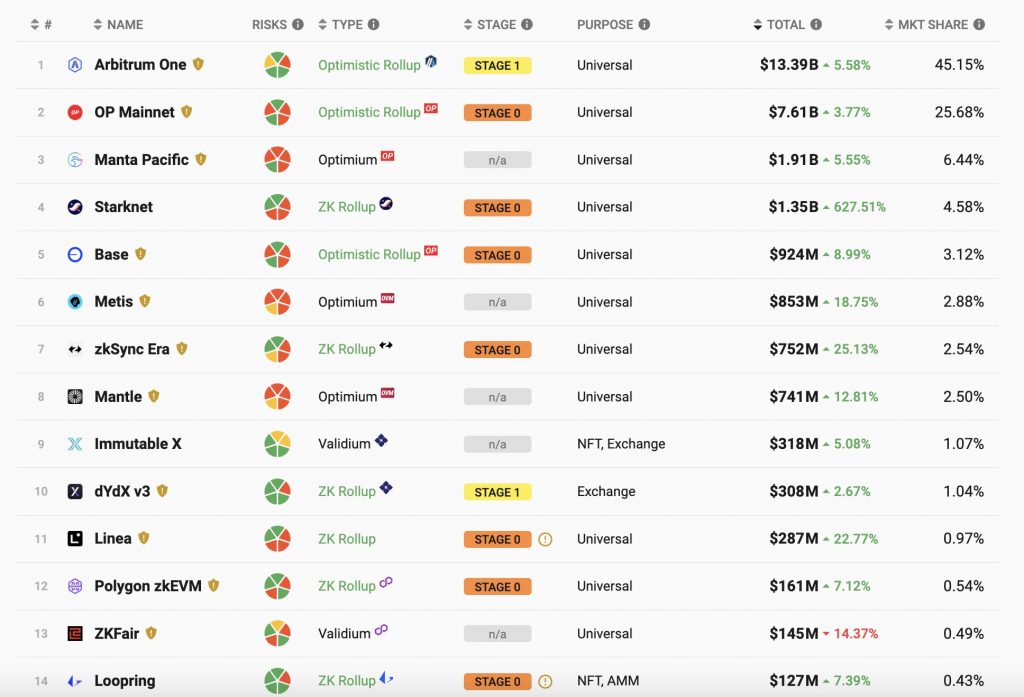Ethereum According to L2Beat, which tracks performance in layer-2 solutions, the total value locked (TVL) in layer 2 solutions running on the ETH network reached $29.65 billion, the highest level in history. This past week saw a 9.2% increase as users and projects migrated to layer 2 platforms to benefit from lower fees, faster transactions and higher efficiency.
Layer-2 solutions are known as protocols that run on top of the Ethereum mainnet but use different consensus mechanisms or data availability methods to solve scalability issues. The current proof-of-work (PoW) consensus has a limitation of only being able to process 15 transactions per second, often encountering network congestion and high gas costs.
As we reported as Koinfinans.com Arbitrumstands out as the most popular layer 2 solution. It has a value of $13.39 billion, accounting for 45.15% of its total Tier-2 TVL. Arbitrum is an optimistic rollup solution that allows smart contracts to run at layer 2 with minimal changes while providing security guarantees from the Ethereum mainnet. Arbitrum includes many leading projects such as Uniswap, Aave, Chainlink and SushiSwap.

Optimism is another important layer 2 solution that supports Ethereum compatibility and smart contracts. It has a TVL of $7.61 billion, making it the second largest tier 2 platform by TVL. It hosts major DeFi protocols such as Optimism, Synthetix, MakerDAO, Compound, and leading NFT marketplace OpenSea.
In the past week, other layer 2 solutions have seen significant TVL gains, such as Manta Pacific, a sidechain that deals with gaming and NFTs, and StarkNet, a zk-rollup that enables scalable and privacy-preserving transactions.
The growth of these solutions is expected to continue as users and developers look to take advantage of the enhanced user experience and innovation potential offered by layer 2 solutions. Additionally, Ethereum’s transition from PoW to proof-of-stake (PoS) next year will create new opportunities and challenges for layer 2 platforms, as these platforms will have to adapt to new consensus models and interoperability standards.

